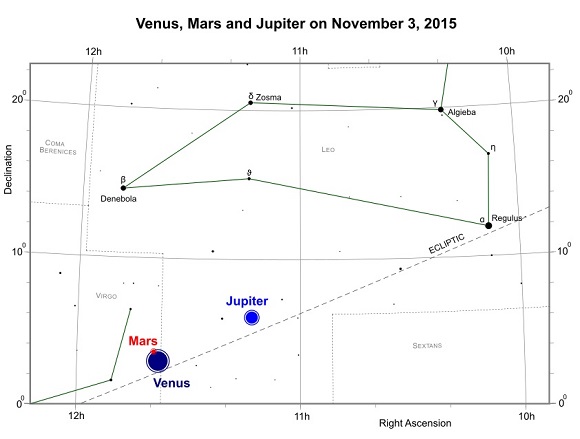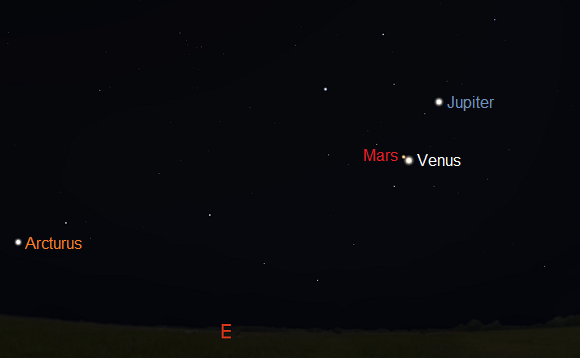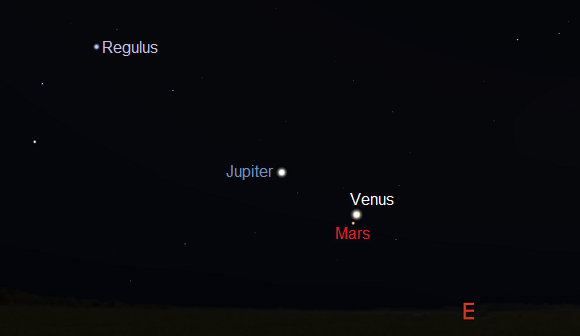A nice visual and photographic opportunity occurs on the morning of November 3rd when early risers will be able to catch Venus and Mars close together in the eastern sky before sunrise. Adding to the scene is Jupiter, which is positioned a few degrees northwest of the pair and located much higher in the sky, the last quarter Moon.
It's been a good few weeks for pre-dawn planet observers with Venus, Jupiter and Mars all easily visible. For a few days even elusive Mercury made a brief appearance low down above the eastern horizon. Mercury is now no longer there but the other three planets remain close together and will do for some days to come.
The brightest of them by far is Venus. It dazzles at magnitude -4.3, displaying a phase like the Moon through a small scope. On November 3rd, Venus will be 55% illuminated. Jupiter (mag. -1.8) is also bright but still 10 times fainter than Venus. However, Mars is much less conspicuous. At magnitude +1.7 it's 250 times fainter than brilliant Venus!
On the morning of November 7th another superb photo opportunity occurs when the waning crescent Moon moves into the same region of sky.
The diagram/illustrations below show the positions of the planets on November 3, 2015.

Venus, Mars and Jupiter on November 3, 2015 - pdf format (credit:- freestarcharts)

